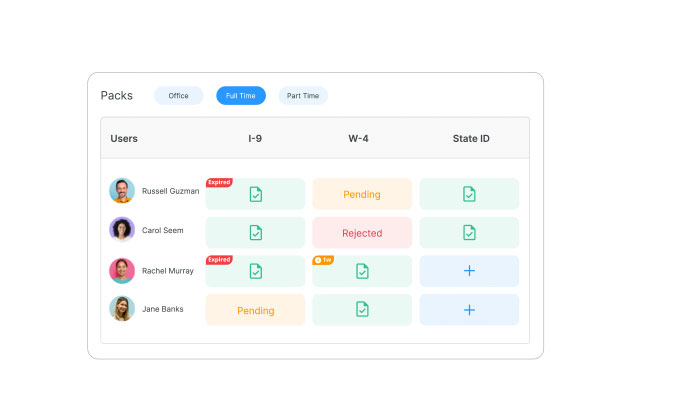Great training managers deliver impactful learning and development programs. In this guide, we dive into their key roles and responsibilities to see how they improve productivity and engagement.
The role of a training manager is challenging yet rewarding. Good training managers help bridge skills gaps in a company’s workforce—boosting productivity, reducing errors, and increasing customer satisfaction. They also help improve employee engagement and so much more.
But training managers are often disconnected from the rest of HR, and their role is easily misunderstood.
Whether you’re looking to hire a great training manager or be one yourself, you’ve come to the right place. Below, we look at 10 common duties of a successful training manager to highlight their key roles and responsibilities.
Identify Training Needs
Training managers have the difficult task of creating training plans that meet the needs of their workforce, organization, and local regulations.
To do this, they must fully understand and connect with their company’s mission and goals. Only then can they assess workers’ performance against these goals.
Reviewing customer feedback and workers’ performance is a great way to identify skills and knowledge gaps. On top of this, training managers may be required to create practical assessments to spot areas of improvement in their workforce.
Finally, it’s also their job to ensure that their training plans complies with regulatory and compliance needs.
Develop and Implement Training Programs
All training manager job descriptions have one key role in common: creating training programs.
Diverse workforces are going to have different learning styles, needs, and paces. An effective training manager needs to consider these differences.
It’s important to study the target audience and design a training curriculum that uses different delivery methods—like e-learning platforms, classroom training techniques, and on-the-job learning.
For example, today’s workforce is largely made up of millennials and Gen Z teams. They’ve grown up in an era of social media and technology. Training managers can create online courses for them that are fun, personalized, and engaging.

Organize Learning and Development Events
The roles and responsibilities of a training manager go beyond designing courses. They have to plan and manage learning and development events such as seminars, workshops, and conferences. Tasks might include curating topics, booking locations, sourcing speakers, and more.
Sometimes, they may need to provide alternative solutions where events are expensive or inconvenient. For example, a training manager could host webinars for distributed teams who can’t attend in person. This way, workers can learn, network, and connect with company culture from anywhere.
Provide Career Development Support
The role of a training manager also extends to supporting employees in progressing their careers. For example, they can coach new supervisors on team management skills or ask senior managers to provide job-specific coaching.
They may also need to organize, run, and track the effectiveness of mentorship programs. It’s the training manager’s role to source and match employees with suitable mentors who can help them navigate their career goals.
Manage the Employee Onboarding Process
Helping new hires integrate and contribute to company goals can be tricky, as new employees come with varying skill levels. They also need to be brought up to speed within a certain timeframe.
Training managers can facilitate this by creating and providing simple training courses and materials. For example, they can write up standard operating procedures (SOPs) to explain tasks in more detail. Also, training managers should ensure the SOPs are easy for new employees to understand.
They can also lead orientation training to introduce employees to the company’s culture and working practices. Additionally, where a new hire lacks expertise, a training manager can match them with an onboarding buddy or have them shadow experienced colleagues.
Track Training and Development Progress
It’s essential for training managers to ensure that employees complete the activities assigned to them. With e-learning platforms, they can track the real-time progress of employees. Plus, they can send reminders to employees who haven’t completed their required courses.
With in-person or virtual classrooms, monitoring attendance is an easy way to track completion. However, some training managers go above and beyond this. For example, they track participation levels by using interactive sessions. Or, they restrict the use of mobile phones during training.
Finally, it’s also their job to report or take disciplinary action against employees who don’t comply.
Assess Effectiveness of Training Programs
Evaluating the success of programs falls under training manager responsibilities. They establish key performance indicators (KPIs) that training programs need to meet, such as the return on investment (ROI). Measuring training ROIs is a tricky business, though. It’s easy to assess the costs of training but difficult to determine the returns.
That’s why successful training managers use other KPIs, too! They develop surveys and check in with workers to gather feedback on how employees feel about the training they’ve received.
They could also use more objective measures like completion rates and training quiz scores. Plus, they could look at performance reviews to check for improvements post-training.

Manage Training Budget
It’s the role of a training manager to stick to the company’s training budget. They prioritize courses that align with company goals and provide the best value for money. Also, they negotiate with external trainers, vendors, and other suppliers to lower costs or receive discounts.
It’s also their duty to keep track of training expenses. This includes trainer fees, travel expenses, technology and equipment costs, and more.
Build and Maintain Relationships
Training managers also need to connect frequently with employees and managers. This way, they can gather feedback on what training content is working and where any knowledge gaps are.
They must also build relationships with senior leaders who they can count on for coaching and mentoring other employees.
Networking with external vendors is also a part of the job. This is a great way to learn about the latest offerings and negotiate the best price with relevant providers.
But managing so many relationships can be tricky, especially if stakeholders are in multiple locations. Training managers also need to find a way to strengthen these relationships virtually.
Stay Up-to-Date With a Modern Workforce
Successful training managers regularly review and update their materials. Today’s workforce contains even more deskless, remote, and hybrid employees than ever before. Thus, training managers have to adapt their methods to stay up to date with their employees’ needs.
For example, mobile-first learning allows workers to access their training from anywhere, and real-world simulations offer a new way of training frontline workers.
Summary
Training managers have the challenging task of maintaining a skilled and knowledgeable workforce. A successful training manager will create engaging training curriculums for employees that comply with relevant regulations.
They also navigate working with limited training budgets while also ensuring that their programs are meaningful and effective.
Finally, keeping up to date on the latest learning and development trends helps training managers stay ahead of the curve and guarantee their offerings are top-quality.



